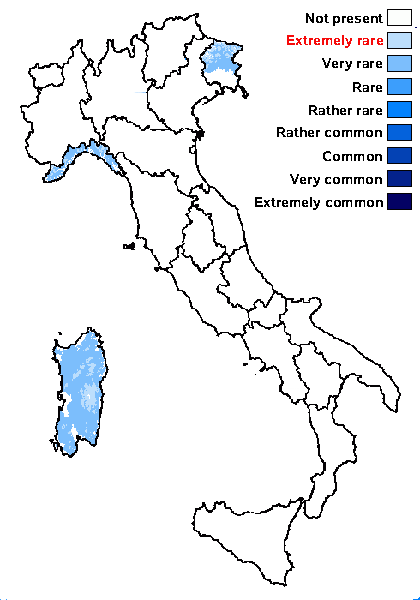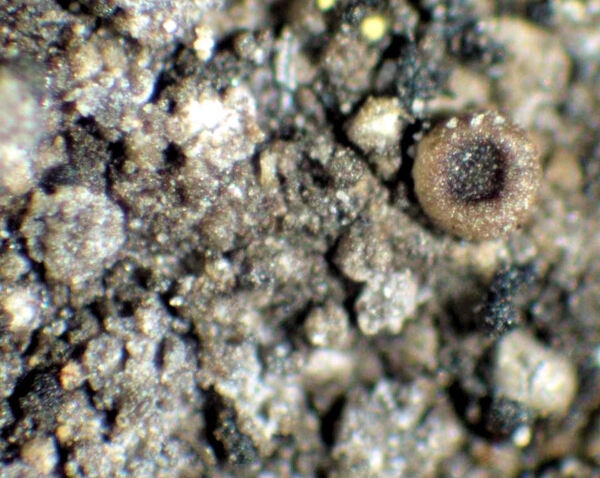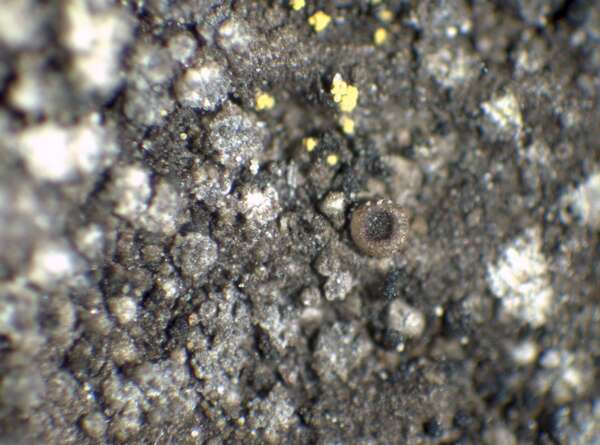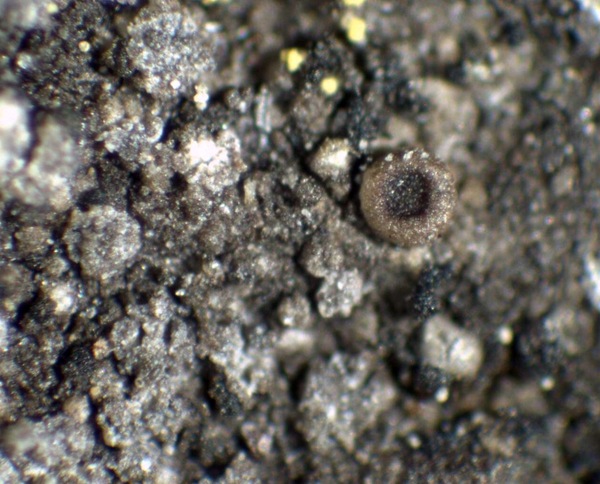Rinodina griseosoralifera Coppins
Lichenologist, 21: 169, 1989.
Synonyms:
Distribution: N - Frl, Lig (TSB 33566). C - Sar (ASU-516331, det. J. Sheard).
Description: Thallus crustose, episubstratic, forming patches up to 10 cm or more in diam., areolate, sorediate, often delimited by a brown prothallus. Areoles dull greenish white, pale grey or greyish brown, up to 0.2 mm wide, rounded, flat to slightly convex, usually becoming entirely dissolved into soredia. Soralia numerous, blue-grey, erupting from the upper surface of the areoles, more or less convex, up to 0.2 mm in diam., discrete or a few confluent. Soredia farinose, 12-25(-30) μm in diam., the outer ones blue-grey, K+ brown Apothecia rare, lecanorine, 0.3-0.4 mm across, sessile, with a more or less poriform, brown disc, and a raised, white-grey thalline margin; proper margin brown, forming a narrow ring around the disc. Exciple (section) brownish in uppermost part, otherwise colourless; epithecium brown; hymenium colourless, up to 125 μm high, the hymenial gel K/1+ blue; paraphyses simple to sparingly branched in upper part, 1.5-2(-3) μm thick, widening to 3.5-4.5 μm at apex. Asci 8-spored, clavate, the K/I+ blue tholus penetrated by a faintly amyloid apical cushion with parallel or diverging flanks, the wall K/I-, surrounded by a K/I+ blue outer layer, Lecanora-type. Ascospores 1-septate, brown, ellipsoid, 18-25(-34) x 10-12 μm, Pachysporaria-type. Photobiont chlorococcoid. Spot tests: thallus K+ more or less faintly yellow, C-, KC-, P-, UV-. Chemistry: atranorin, zeorin, traces of an unidentified terpenoid.Note: a species found on trunks of broad-leaved trees, often near the base, sometimes invading epiphytic mosses; easy to overlook, being mostly sterile, it is probably more widespread throughout the country, mostly at relatively low elevations. It was included in the Italian red list of epiphytic lichens as “Data Deficient” (Nascimbene & al. 2013c).
Growth form: Crustose
Substrata: bark
Photobiont: green algae other than Trentepohlia
Reproductive strategy: mainly asexual, by soredia, or soredia-like structures (e.g. blastidia)
Commonnes-rarity: (info)
Alpine belt: absent
Subalpine belt: absent
Oromediterranean belt: absent
Montane belt: extremely rare
Submediterranean belt: very rare
Padanian area: absent
Humid submediterranean belt: very rare
Humid mediterranean belt: absent
Dry mediterranean belt: absent

Predictive model
Herbarium samples
Growth form: Crustose
Substrata: bark
Photobiont: green algae other than Trentepohlia
Reproductive strategy: mainly asexual, by soredia, or soredia-like structures (e.g. blastidia)
Commonnes-rarity: (info)
Alpine belt: absent
Subalpine belt: absent
Oromediterranean belt: absent
Montane belt: extremely rare
Submediterranean belt: very rare
Padanian area: absent
Humid submediterranean belt: very rare
Humid mediterranean belt: absent
Dry mediterranean belt: absent

Predictive model
| Herbarium samples |
 Index Fungorum
Index Fungorum
 GBIF
GBIF





